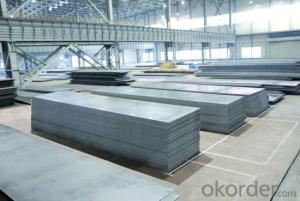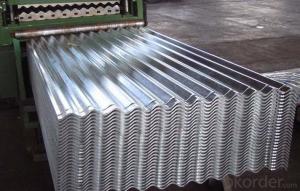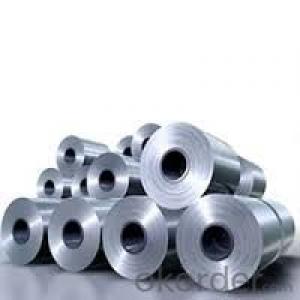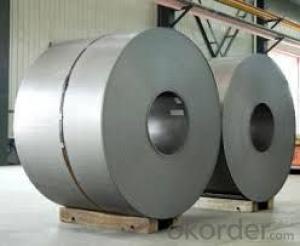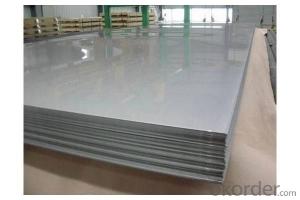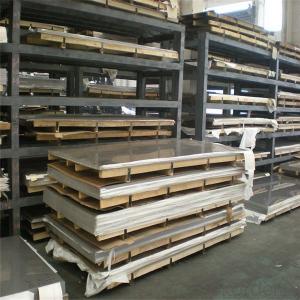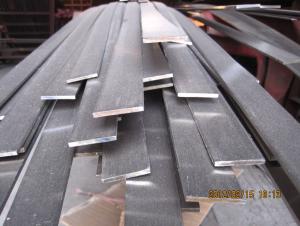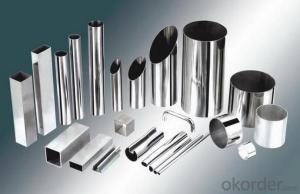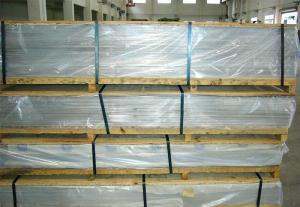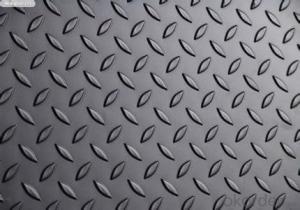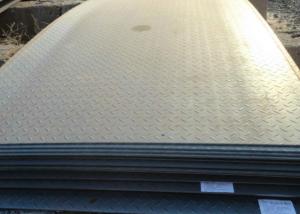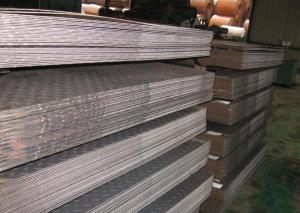Supper Carbon Structural Steel
- Loading Port:
- China Main Port
- Payment Terms:
- TT OR LC
- Min Order Qty:
- -
- Supply Capability:
- -
OKorder Service Pledge
OKorder Financial Service
You Might Also Like
Quality carbon structural steel is introduced
Definition
Quality carbon structural steel (GB/T699-1999):
Steel in addition to containing carbon (C) elements and for deoxidizing and contains a certain amount of silicon (Si) (generally not more than 0.40%), manganese (Mn) (generally not more than 0.80%, higher to 1.20%) alloy elements, excluding other alloy elements (residual element except). This kind of steel must also ensure that the chemical composition and mechanical properties. The sulfur phosphorus (S), (P) the content of impurity elements in the general control 0.035%. If the control is in 0.030% person that senior high quality steel, the brand should add behind "A", for example, 20A; if P 0.025% control in the following, the S control is in 0.020% the following, called super high quality steel, the brand should add behind "E" to show the difference. For by raw material brought into other residual alloy elements in steel, such as chromium (Cr), nickel (Ni), copper (Cu) etc. the content general control in the Cr = 0.25%, Ni = 0.30%, Cu = 0.25%. Some grades of manganese (Mn) content reached 1.40%, known as manganese steel.
This kind of steel is to rely on the adjustment of carbon (C) to improve the mechanical properties of steel, therefore, according to the carbon content of the steel, this can be divided into:
Low carbon - carbon content is generally less than 0.25%, such as 10, 20 steel etc.;
Medium carbon - carbon content in general 0.25 ~ 0.60%, such as 35, 45 steel etc.;
High carbon steel -- the carbon content is generally greater than 0.60%. This kind of steel is generally not used in the manufacture of steel pipe.
In fact, they are between the carbon content and no clear boundaries.
This kind of steel production is large, wide purpose, generally more rolling (forging) made of round, square, flat and profiles, sheet and seamless steel pipe. Mainly used in the manufacture of general structure and mechanical structure parts, components and structural parts and pipes conveying fluid. According to the use requirements, sometimes requiring heat treatment (normalizing or quenching and tempering) after use.
Classification
Quality carbon structural steel according to the different carbon content can be divided into three categories: low carbon steel (C = 0.25%), carbon steel (C 0.25-0.6%) and high carbon steel (C>
Dear friends, I am glad to receive your mail, we will give you the tracking number in the time in October 14th, in October 16th the goods by customs returned, in October 16th we re transport, this is the new tracking number,
Dear friends, I am glad to receive your mail, we will give you the tracking number in the time in October 14th, in October 16th the goods by customs returned, in October 16th we re transport, this is the new tracking number,
0.6%).
Quality carbon structural steel is divided into normal manganese content in manganese containing different amount (containing manganese 0.25%-0.8%) and high content of manganese (Mn containing 0.70%-1.20%) two group, the latter has the mechanical performance and good processing performance.
1, hot rolled quality carbon structural steel sheets and strips
Hot rolled quality carbon structural steel plates and strips for automobile, aviation industry and other parts. The grade of steel boiling steel: 08F, 10F, 15F; killed Steels: 08, 08AL, 10, 15, 20, 25, 30, 35, 40, 45, 50. The following 25 and 25 for low carbon steel 30 and more than 30 for the medium carbon steel.
2, hot rolled quality carbon structural steel plates and wide strips
Hot rolled quality carbon structural steel plates and wide strips used for various mechanical parts. The grade of steel is low carbon steel include: 05F, 08F, 08, 10F, 10, 15F, 15, 20F, 20, 25, 20Mn, 25Mn; medium carbon steel include: 30, 35, 40, 45, 50, 55, 60, 30Mn, 40Mn, 50Mn, 60Mn etc.; high carbon steel including: 65, 70, 65Mn.
Use
The content of sulfur and phosphorus quality carbon structural steel is less than 0.035%, mainly used in the manufacture of parts is more important. In the project is generally used for steel wire, steel strand and anchorage of prestressed concrete production, and high strength bolts, important structural steel castings.
Full of responsibility and do not break free, full of compatible without losing individuality. For example, the number 20 represents the average steel carbon content of 0.20% high quality carbon steel. For the boiling steel in the rear plus F, such as 10F, 15F etc.. 08, 10, 15, 20, 25 grades and belongs to the low carbon steel, which has good plasticity, easy drawing, stamping, extrusion, forging and welding.
Quality carbon structural steel in 08, 10, 15, 20, 25 grades and belongs to the low carbon steel, which has good plasticity, easy drawing, stamping, extrusion, forging and welding. The most widely used of the 20 steel, used to manufacture screws, nuts, washers, a small shaft, stamping parts, welding parts, sometimes also used in the manufacture of carburized parts. 30, 35, 40, 45, 50, 55 grades is medium carbon steel, because of increased steel pearlite content, its strength and hardness are improved than before, after quenching hardness can be increased significantly. Among them, with 45 steel is the most typical, it not only strength, high hardness, and has better plasticity and toughness, namely excellent comprehensive properties. 45 steel uses in the mechanical structure of the most widely used to manufacture, screw, shaft, gear, a connecting rod, a sleeve, keys, an important screws and nuts etc.. 60, 65, 70, 75 grades belong to high carbon steel. They not only after quenching and tempering strength and hardness, and excellent elasticity, used to manufacture a small spring, spring, steel wire rope, such as roller.
- Q: What is the difference between a matte and glossy steel sheet?
- The main difference between a matte and glossy steel sheet lies in their surface finish. A matte steel sheet has a dull, non-reflective surface that diffuses light, resulting in a more muted appearance. On the other hand, a glossy steel sheet has a smooth, reflective surface that reflects light, giving it a shiny and polished look.
- Q: Are the steel sheets recyclable?
- Yes, steel sheets are recyclable.
- Q: What are the different forms of steel sheets (flat, perforated, expanded, etc.)?
- There are various forms of steel sheets available to meet different applications and requirements. Some of the options include the following: 1. Flat Steel Sheets: With a smooth and flat surface, these sheets find common use in the construction, fabrication, and manufacturing industries. They are versatile, allowing for easy cutting, shaping, and forming into different products. 2. Perforated Steel Sheets: These sheets feature evenly spaced small holes or perforations. They are commonly used for filtration, ventilation, and decorative purposes. Perforated steel sheets provide excellent airflow and visibility while maintaining their structural integrity. 3. Expanded Steel Sheets: These sheets are created by cutting and stretching a flat steel sheet, resulting in a mesh-like pattern. They offer lightweight, sturdy construction and excellent ventilation and drainage. They are often used in applications such as walkways, gratings, fencing, and security. 4. Galvanized Steel Sheets: These sheets are coated with a layer of zinc, which provides exceptional corrosion resistance. Galvanized steel sheets are suitable for outdoor applications where exposure to moisture and harsh weather conditions is a concern. 5. Stainless Steel Sheets: Made from an alloy of steel and chromium, these sheets offer excellent corrosion resistance and high tensile strength. They find common use in the food industry, transportation, medical equipment, and architectural applications. 6. Cold Rolled Steel Sheets: These sheets are produced by rolling steel at room temperature, resulting in a smooth and even surface. Cold-rolled steel sheets offer improved surface finish, dimensional accuracy, and strength. They are commonly used in the automotive, appliances, and furniture industries. 7. Hot Rolled Steel Sheets: These sheets are produced by heating steel above its recrystallization temperature and then rolling it. Hot-rolled steel sheets have a rougher surface and are more malleable compared to cold-rolled sheets. They are commonly used in structural components, construction, and general fabrication. These examples represent just a fraction of the available forms of steel sheets. Each type possesses unique properties and advantages that make them suitable for various applications and industries.
- Q: Are steel sheets suitable for outdoor furniture?
- Yes, steel sheets are suitable for outdoor furniture. Steel is a durable and weather-resistant material that can withstand outdoor conditions such as rain, sun exposure, and temperature changes. Steel sheets can be shaped into various furniture designs and coated with protective finishes to prevent rusting and corrosion, making them a popular choice for outdoor furniture.
- Q: Are steel sheets corrosion-resistant?
- Yes, steel sheets can be made corrosion-resistant through various methods such as coating them with protective layers like zinc or applying corrosion-resistant alloys.
- Q: What are the different sheet metal bending techniques for steel sheets?
- Steel sheets can be manipulated and shaped using various sheet metal bending techniques. These techniques help achieve desired forms and angles. Some commonly used techniques include: 1. V-bending: A V-shaped punch and die set are used to create a sharp bend in the steel sheet. The material is placed between the punch and die, and force is applied to form the desired angle. V-bending is versatile and can create different angles and shapes. 2. Air bending: In this technique, a punch presses the steel sheet into a V-shaped die without completely contacting the material. Bending is achieved by controlling the depth of penetration of the punch. Air bending allows for greater flexibility in angle adjustments and requires less force. 3. Edge bending: This technique involves bending the edge of the steel sheet to create flanges or edges with specific angles. The sheet is clamped between a punch and a die, and force is applied to bend the material along the edge. 4. Bottom bending: This technique is used to create larger bends in steel sheets. The sheet is clamped between a punch and a V-shaped die, and force is applied to bend the material around the die. Bottom bending is suitable for creating U-shaped parts or boxes. 5. Roll bending: Also known as cylindrical bending, this technique is used to create cylindrical or curved shapes in steel sheets. The sheet is passed through a set of rolls that gradually bend the material into the desired shape. Roll bending is commonly used in the production of pipes, tubes, and cylinders. 6. Coining: Coining is a precision bending technique that creates crisp, sharp bends. The steel sheet is pressed between a punch and a die, with the die featuring a sharp edge. High pressure is applied, resulting in a precise and defined bend. These are just a few of the many sheet metal bending techniques available for steel sheets. Each technique has its advantages and applications, and the choice of technique depends on factors such as the desired angle, sheet thickness, and shape complexity.
- Q: How thick are steel sheets available?
- Steel sheets are available in various thicknesses, ranging from as thin as 0.4 millimeters to as thick as 150 millimeters, depending on the specific application and requirements.
- Q: Are the steel sheets suitable for architectural applications?
- Indeed, architectural applications can certainly make use of steel sheets. Steel, being a versatile material, presents numerous benefits for architectural purposes. It possesses strength, durability, and the ability to withstand harsh weather conditions, thus making it an excellent choice for various architectural elements like roofing, cladding, and facades. Furthermore, steel sheets provide architects with design flexibility, enabling the creation of unique and innovative structures. Moreover, steel is an environmentally sustainable material due to its recyclability and long lifespan, making it an eco-friendly option for architectural applications. All in all, steel sheets serve as a dependable and versatile choice for architects who desire to incorporate structural integrity, aesthetic allure, and sustainability into their designs.
- Q: Are steel sheets suitable for corrosive environments?
- No, steel sheets are not suitable for corrosive environments as they can rust and deteriorate when exposed to moisture and certain chemicals.
- Q: What is the difference between a hot rolled and cold rolled stainless steel sheet?
- The manufacturing process and resulting properties distinguish hot rolled stainless steel sheets from cold rolled ones. Hot rolled sheets are created by heating stainless steel to a high temperature and rolling it through a series of rollers to achieve the desired thickness. This method is typically used for larger sheets and results in a rougher surface finish. Additionally, hot rolled sheets are known for their inherent strength and malleability, making them suitable for various applications that require structural integrity. In contrast, cold rolled stainless steel sheets are produced by cooling the stainless steel to a lower temperature and passing it through rollers at room temperature. This process yields a smoother and more refined surface finish compared to hot rolled sheets. Cold rolled sheets are commonly preferred for precision-demanding applications such as automotive components, appliances, and electronic devices. Regarding mechanical properties, hot rolled stainless steel sheets generally possess a higher yield strength and lower ductility when compared to cold rolled sheets. This can be attributed to the grain structure formed during the hot rolling process, resulting in a more coarse and less uniform microstructure. Conversely, cold rolled sheets have a finer grain structure and higher ductility, making them more suitable for forming and bending operations. To summarize, the primary differences between hot rolled and cold rolled stainless steel sheets lie in the manufacturing process and the resulting properties. Hot rolled sheets exhibit a rougher surface finish, higher strength, and lower ductility, whereas cold rolled sheets possess a smoother surface finish, higher ductility, and are often preferred for precision-demanding and forming applications.
Send your message to us
Supper Carbon Structural Steel
- Loading Port:
- China Main Port
- Payment Terms:
- TT OR LC
- Min Order Qty:
- -
- Supply Capability:
- -
OKorder Service Pledge
OKorder Financial Service
Similar products
Hot products
Hot Searches
Related keywords
